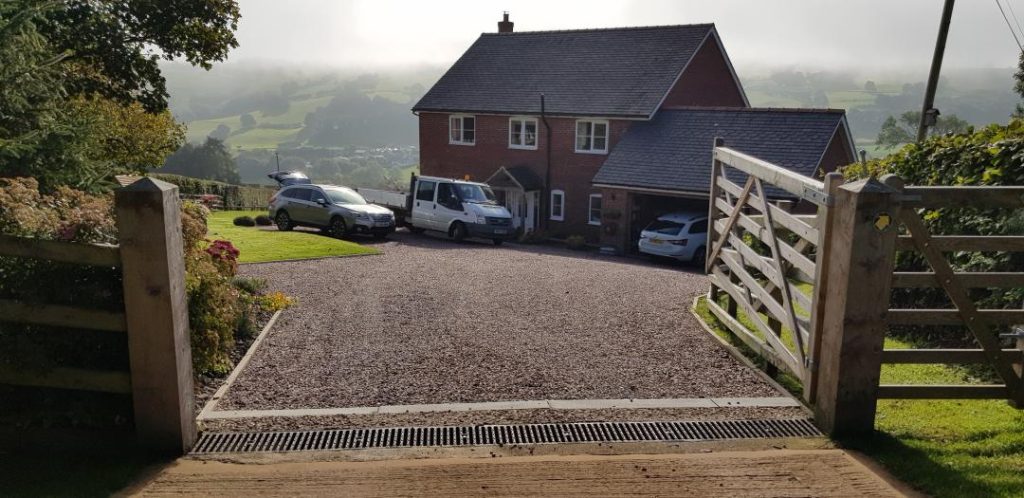Gravelrings
Gravel grid system

Hilly areas of the UK make highly scenic places to live. The gentle undulations of rolling landscapes can provide sensational panoramas and a magnet for walkers and people who generally love being outdoors. But when it comes to practicalities, such hilly terrain can pose a challenge. Take gravel driveways, for example – hills and slopes mean that gravel can easily slide out of place, resulting in a thin, rutted, and unsightly surface, as well as gravel in places where it is not wanted. A challenge for homeowners is keeping gravel on a sloping driveway.
When homeowner Jim Greaves came to lay a new gravel driveway at his beautiful home overlooking the valley in Derwen, North Wales, he faced these exact challenges. His driveway slopes towards his property on a 20 percent gradient, and whenever it rained, the gravel on the old driveway would be swept toward the house. This left an unsightly surface that was difficult to maintain. What’s more, it was challenging to drive over because the loose stones made tyres lose traction.

Jim needed a solution. He considered his driveway surface options and thought about removing the gravel and opting instead for a tarmac driveway. However, laying a tarmac driveway would require planning permission, because non-permeable surfaces are not SuDs-compliant. Not to mention being a less attractive surface than gravel. After further investigation and weighing up the pros and cons of a gravel driveway, Jim found that the issue wasn’t with the gravel itself; it was with the installation process. The problems he had been facing with his old gravel driveway were, in fact, avoidable. The age of the driveway was at the heart of the problem, having been laid using old methods that didn’t include any method to help gravel retention – now considered essential for modern gravel driveways on hills and slopes.
Whether they’re sloping or not, gravel driveways will benefit from having a gravel retention system installed beneath the stones. Beauxfort’s Gravelrings are flexible gravel mats with a strong, circular design to hold gravel in place and create a long-lasting, low maintenance surface. What’s more, the gravel grids have an integral mesh base that prevents silt build-up (another cause of uneven driveways) and resists unsightly weed growth.
Ivan Holding found himself in a similar position to Jim. Professional landscaper, Dave Sinclair, who installed a new gravel driveway for Ivan, recommended Gravelrings to overcome the issue of gravel migration, but also because he knew how easy the gravel grid system is to install. With a low profile of just 25mm, the Gravelrings gravel system requires a shallower excavation than other gravel retention grids, which is particularly helpful when working on a sloped surface. The result? Ivan achieved an even, neatly edged, stable limestone gravel driveway that became a feature worthy of his premium property.

To discuss how Beauxfort can help you solve the problems of a sloping driveway call 0330 055 2599 or email info@beauxfort.com. Additionally, to understand how Gravelrings gravel mats work order a free sample.